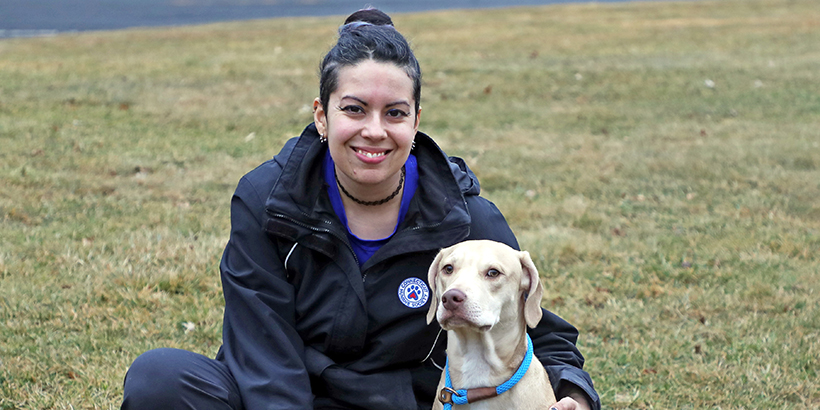
Dog parks can be a fun place, but it can also be an overwhelming or stressful setting for your pup. When dogs visit the dog park, they should all be vaccinated, well-socialized, and responsive to verbal cues. Here are a couple tips to follow to ensure you’re doing your part:
Make sure your dog is medically ready:
- Your dog should be spayed or neutered
- Up-to-date on all vaccines
- Over 6 months old
- And healthy – don’t bring any doggy germs with you!
Maintain control:
- Your dog should be great at coming to you when you call.
Use the 5-second rule for interactions with new dogs: limit sniffing other dogs to 5 seconds. - If your dog isn’t leash reactive, it may be a good idea to have them leashed while meeting new dogs. Once you’re sure they are getting along, you can allow your dog off-leash.
- If you are using a retractable leash, it should be locked at 6’ or under.
- Keep yourself distraction-free (this is especially not a time to be on your phone!). Always be prepared to separate your dog or intervene if necessary. You can use a compressed air can, air horn, whistle, water, etc., but you should never physically put yourself between fighting dogs.
- Allow your dog to take breaks, even when things are going well. A minute away from the crowd can help your dog reset.
- Keep tabs on the space. Corners and crowding can overwhelm a pup.
- Avoid letting your dog stare. Other dogs consider this a threat.
- Don’t force friendships. If your dog is wary, that’s okay! Some dogs, just like people, are selective on who they want to hang out with; it can take some time to find the right friends.
Watch for signs of stress. Look for these signs and take a break to keep your pup worry-free. Plus, then they won’t need to find a different way to tell you they’re nervous. Here are some common stress signs to watch for:
- avoidance
- sneezing
- yawning
- scratching and/or licking
- stiffness
- head and tail held high
- bared teeth
- growling
- wrinkled lips
- showing the whites of his/her eyes
- barking and/or growling
- raised hair along the neck and/or back
Pick the right park for your pet:
- For your first few visits, pick a quiet park with limited activity.
- Make sure your park is clean and well-maintained.
- Some parks have separate areas for larger dogs to play in and another for smaller dogs. When available, utilize the proper pen for your dog’s size. Avoid mixed-size play groups. Similar age, size and play style is ideal. If your dog likes to play rough, they could accidentally injure a smaller or more timid dog.
AVOID dog parks if…
- Your dog has a high prey drive and/or becomes over-aroused easily. These dogs have trouble calming down, and this can lead to conflicts.
- Your dog guards and/or becomes aggressive when around toys, food, water, etc.
- Your dog is a bully toward others, OR they’re the recipient of bullying and therefore avoid other dogs, tremble, or otherwise show they are uncomfortable.
- You are not able to pay close attention and monitor your pup’s interactions with others, behaviors and/or body language.
Your dog has had a bad experience at the park and now displays behavior issues when they see another dog.
Dog parks aren’t for everyone, but the good news is, there are other options to socialize your dog and to take them for a fun adventure. These include:
- Arranging private play dates with dogs you know who are healthy, friendly and a good match. Reach out to family members, friends and neighbors.
- Exercising your dog more. Jogging, fetch, Frisbee, blowing bubbles, etc. are all great activities to get your dog moving… and increase your bond with each other, too!
- If your lifestyle allows, consider adding a second dog to your home who can be your dog’s best friend.
